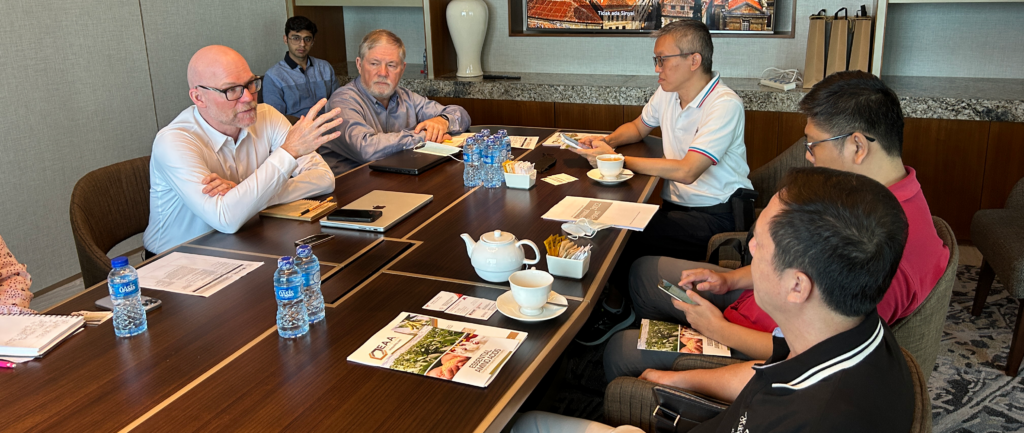A Philippine trade team of 15 professionals in the feed industry made a stop in Osakis to tour Tim Stelling’s farm on Sept. 6.
The farm tour was part of a soybean meal program organized by Mishek Inc. & Associates, a market and international trade development consultant. The trade team also explored the port of Grays Harbor in Washington and learned from University of Minnesota faculty about soybean quality and the use of drones in soybean production.
During the farm tour, trade team participants saw equipment, soybean fields and beef cattle raised by the Stelling family.
“My family and I enjoy hosting visitors at our farm,” says Stelling, a director with the Minnesota Soybean Growers Association (MSGA). “Meeting the Filipino trade team was especially exciting since they typically buy soybeans off the Pacific Northwest, a port region that exports some of the beans grown by Minnesota farmers.”

U.S. soybeans purchased by the Philippines are typically shipped via ports in the Pacific Northwest (PNW) and arrive in 21 days, much quicker than soy shipments from the New Orleans port region.
During the farm tour, trade team members were given copies of the 2018/2019 Soybean Export Quality Report, which reports grading factors, chemical composition and physical factors of soybeans from four general export regions in the U.S. Data in the report reaffirms the quality and essential amino acid (EAA) content of soybeans shipped from the PNW.
“University of Minnesota research has shown that the climate and soils of the northern states result in a superior concentration of EAAs in the soybeans and soymeal exported via PNW ports,” says Kim Nill, Minnesota Soybean Research & Promotion Council (MSR&PC) director of market development. “This results in value-added for Philippine animal producers.”







